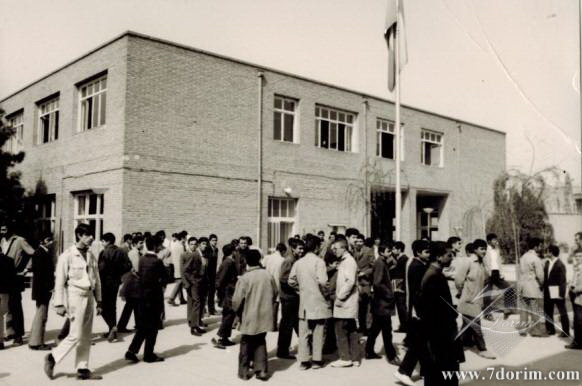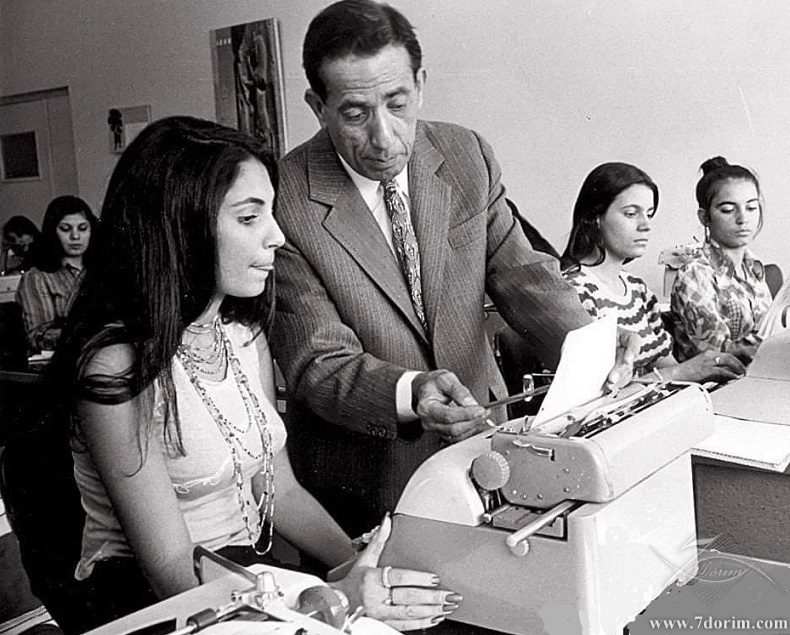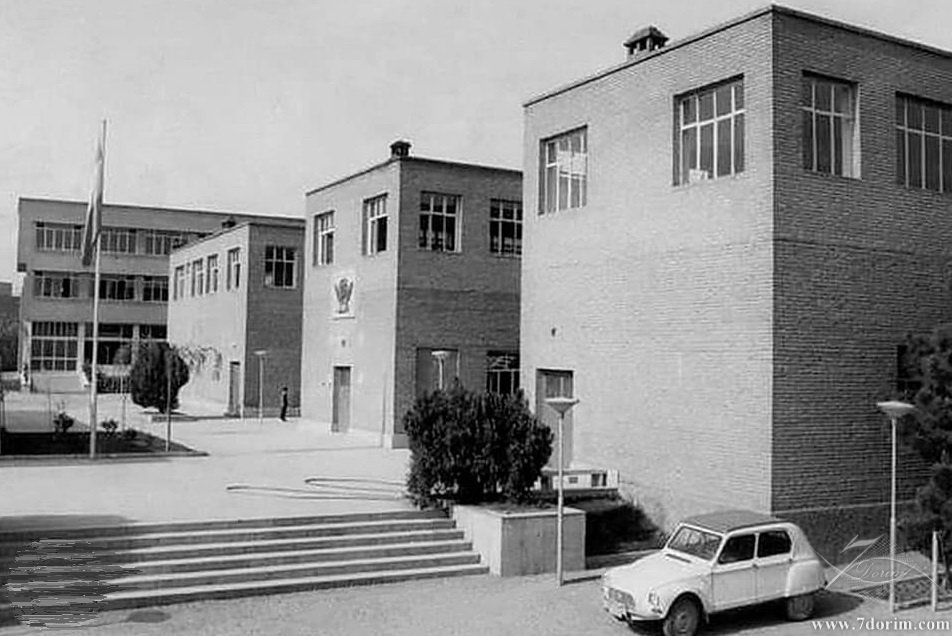
Organization Reconstruction ، Travail
ORT
Based in Geneva, Switzerland, the World Cultural ORT Institute was established in 1880 and currently has 50 branches and more than 800 vocational schools in European, Asian, American, and African countries. Deeply valuing productive work and recognizing the significance of skilled and artistic individuals in advanced human societies, ORT strives to equip young people with honorable professions and industries. It believes that by elevating the respect and dignity of work among youth, and by nurturing skilled and knowledgeable artisans, it can empower them to lead free, independent, and secure lives.
Following the devastation of World War II, with the wounds of the Holocaust still raw in our community’s collective memory, concerns about the future of young people grew amidst rapid industrialization worldwide. A recurring topic of discussion was the limited participation of Jewish individuals in professional fields, with many concentrated in business pursuits. Meanwhile, the younger generation expressed aspirations for higher education, professional roles, and societal contribution. Recognizing the untapped potential among young graduates and the necessity for an organization to channel their talents toward productive endeavors, Engineer Levi, brother of Dr. Habib Levi, emerged as a visionary figure.
Upon Engineer Levi’s suggestion, a committee comprised of influential social activists of the time was formed. This committee included notable figures such as the late Morteza Khan Senehi, the late Mirza Musa Khan Toob, Mehdi Khan Cohenim (Kuh Noor), the late Ebrahim Moreh, and the late Jahanbakhsh Banayan, alongside several other community philanthropists. Together, they laid the foundation for the ORT vocational school in Iran.
To this end, extensive studies were initially conducted, and negotiations and consultations were held with many technical and professional experts. Some preliminary preparations were also made, but it was clear that the realization of this project required a sufficient budget and more technical information.
In September 1950, representatives of ORT World, led by Abraham Blass, came to Iran to train young people in various industries and professions. His first act was to establish a vocational school in Tehran with short courses. In 1951, vocational training courses were established, followed by three-year technical high school courses in 1958 and two-year advanced courses in 1962.
The first president of ORT Iran was Engineer Jahanbakhsh Banayan, and the technical director was Engineer Rabi’ Eli. Engineer Banayan gave up his professional engineering and construction activities for several years to advance and launch the ORT organization. He focused all his efforts on the development of vocational education at ORT Technical High School. As a result, in a short period of time, ORT Technical High School grew from an unknown and new institution to the most successful industrial technical high school in Iran.
The ORT Industrial School was recognized by the Ministry of Culture for the academic year 1954-1955. To further its mission of training top-notch technicians, it established the following well-equipped departments:
Boys: Metalworking, Auto Mechanics, Electro Mechanics, Refrigeration and Air Conditioning Repair, Advanced Industrial and Metal Building Design.
Girls: Secretarial, Sewing, Housekeeping, and Hairdressing.
About 720 students studied in these departments in the early years and were educated according to the program approved by the Supreme Council of Culture. 160 students were settled in a modern dormitory.
Additionally, the ORT Industrial School established well-equipped workshops in several high schools in Tehran, including Ettihad, Koorosh, Ganj-e Danesh, and Roohi Shaad Elementary School. Each year, students received comprehensive training under the guidance of experienced teachers like Shahnazi and Hakimi, preparing and guiding them for their future professions.
The ORT Iran Institute has consistently strived to expand its offerings and update its facilities to meet the evolving needs of the times. In the academic year 1965-1966, it laid the groundwork for a new department focused on electronics (specifically, radio and television) and commenced its operations.
With modern technical equipment and a well-trained educational staff, the ORT Iran Institute quickly established itself as a leading technical center in the country. Its reputation was such that it was entrusted with the responsibility of training technical teachers nationwide. This initiative led to remarkable success in educating and preparing technical students across the country.
ORT Iran Women’s Organization
Following the establishment of ORT Iran, a dedicated group of women from the community stepped forward to create an administrative cell known as the “ORT Iran Women’s Organization”. Led by Parvin Motamed, president of ORT Iran, and managed by Monireh Senehi and later Shamsi Banayan, this group worked tirelessly to support the largest vocational training center in the country.
They embraced their responsibilities with determination, striving to preserve and enhance the center. One of their key roles was overseeing the dormitories for students coming from other cities and residing at ORT full-time. They ensured these students received nutritious meals every day, including holidays, and even prepared special meals for the Sabbath. Additionally, they managed the kitchen, procured food supplies, maintained dormitory hygiene, and provided clothing to students from low-income families.
Other important activities of this committee included:
- Fundraising through seasonal parties and fashion shows featuring designs by female students.
- Participation in most the National Fund activities.
- Collaboration with the Iranian Women’s Organization.
- Holding spiritual sessions (Tehillim reading).
- Collaboration with the Reza Pahlavi School for the Blind.
- Writing two Braille books by two members of the ORT Iran Women’s Committee for the blind.
The founders and members of the board of directors of the ORT Iran Women’s Organization include:
- Monireh Senehi
- Touriya Pourat
- Mahin Nikbakht
- Shamsi Banayan
- Jalis Farhoumand
- Tooba Azizian
- Sara Moradian
- Tooba Shomer
- Parvin Motamed
- Victoria Vojdani
- Parvin Sahim
- Mahin Amid
- Shamash
- Valantin Baroukh
- Ezzat Younesi
- Parvin Karmeli
- Iran Danialpour
- Tabariaie
- Kamali
- Fahimeh Sefatizadeh
Mrs. Shamash and Mrs. Gigio Vojdani were Iraqi Jewish women who were active volunteers in this group.
In addition to Tehran, ORT established independent branches in Isfahan and Shiraz, where it trained young men and women in various technical, vocational, and artistic fields based on local industries and needs. To this end, in 1954, Blass traveled to Shiraz with Ebrahim Moreh and after establishing ORT Shiraz, handed over its management to Manouchehr Omidvar. Subsequently, similar steps were taken in Isfahan to establish the ORT Technical School.
After the Islamic Revolution in Iran in 1979, ORT Iran was closed and confiscated by the government, along with many other educational and cultural institutions. The name of the ORT school was changed to “Palestine Technical School”.

“ORT” conservatory for girls, hairdressing training classes, Tehran, 1353 solar “ORT”

“ORT” Boys’ College, Tehran, 1353 “ORT”

“ORT” Conservatory for boys, drawing class, Tehran, 1350 “ORT”

“ORT” Conservatory for boys, electronic class, Tehran, 1350 “ORT”

Typing training classes, Art Girls Specialized Institute – Tehran 1349

Ort indoor area for boys – Tehran, 1971 AD


 فارسی
فارسی